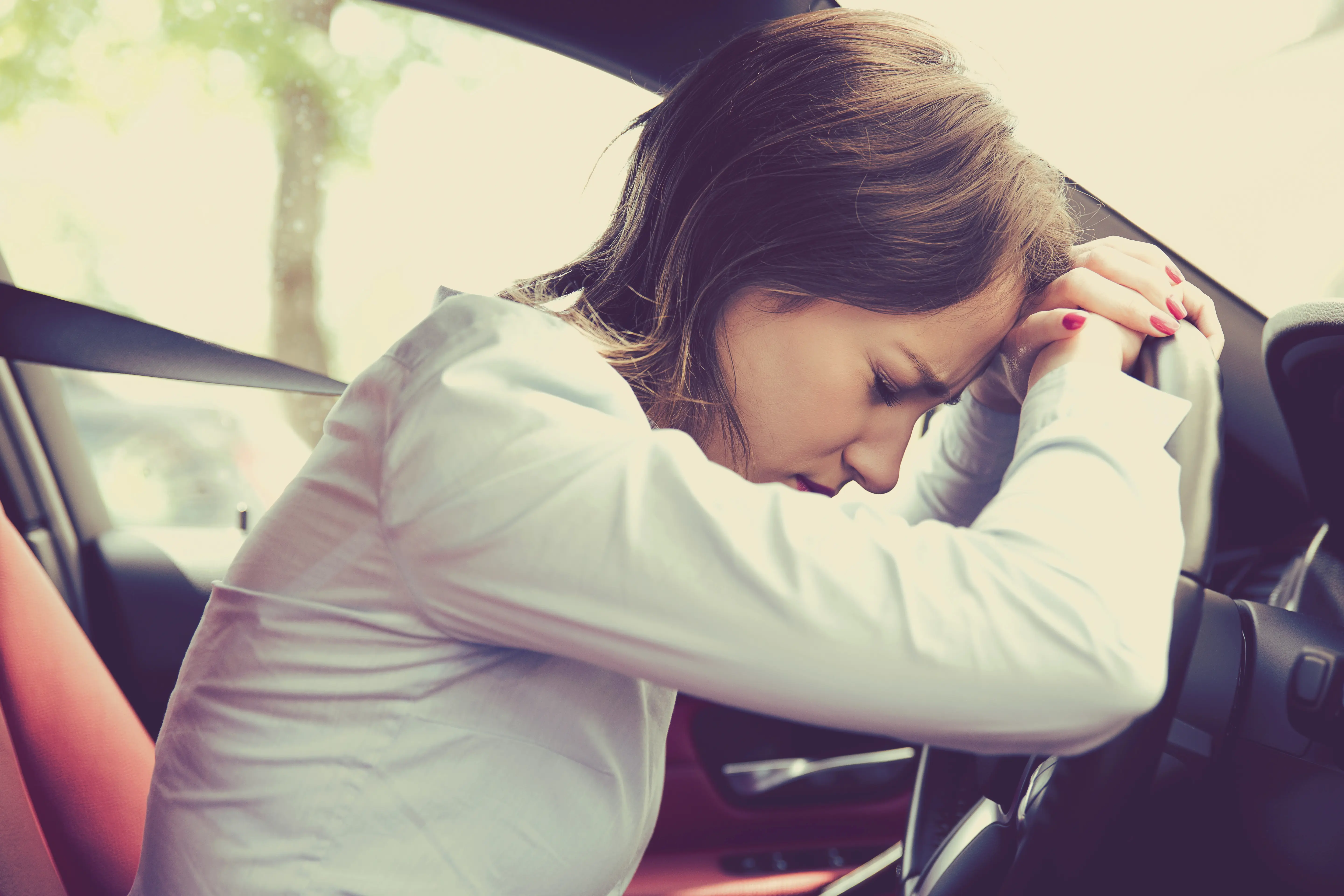Uninsured motorist (UM) coverage pays out if you get into a crash with a driver who isn’t insured. This may happen more often than you’d think. According to a 2022 study from the Insurance Research Council, about one in seven drivers isn’t insured.
Uninsured motorist vs. underinsured motorist coverage
If you’re considering buying uninsured motorist coverage, you may also want to purchase underinsured motorist (UIM) insurance.
UM and UIM are sometimes bundled into a single portion of your policy called UM/UIM, but each covers different scenarios.
- Uninsured motorist: If you get into an accident with a driver who doesn’t have car insurance coverage, UM pays out to cover your recovery costs because the at-fault driver has no insurance.
- Underinsured motorist: UIM applies if you get into an accident caused by a driver who has some insurance but not enough to cover all your expenses. UIM coverage can help you close the gap between the at-fault driver’s policy limits and your full recovery costs up to your UIM policy limits.
What is covered by uninsured motorist coverage?
UM and UIM coverage can be further broken down into two types of coverage: bodily injury and property damage. Most UM/UIM insurance is strictly bodily injury liability, called UMBI or UIMB, but some states may also offer or require property damage UM/UIM coverage, called UMPD or UIMPD.
Here’s what each of these two types of UM/UIM covers:
- Bodily injury UM/UIM: If you or your passengers get injured, UMBI/UIMBI helps to pay the resulting medical bills. It may also cover other bills, like lost wages or funeral expenses.
- Property damage UM: If your car or belongings are damaged, UMPD/UIMPD steps in to repair or replace them. UMPD/UIMPD isn’t available everywhere, so you may need to check your policy details to find out whether you have access to this coverage.
Note that your exact coverage will depend on the auto insurance policy you buy and the insurance laws in your state. You may also have a deductible for UMPD/UIMPD in some states, but you won’t generally have a deductible for bodily injury coverage.
Uninsured motorist coverage usually covers expenses from a hit-and-run accident, but some states may require hit-and-run claims to be filed under collision coverage.
Do you need uninsured motorist coverage?
Uninsured motorist coverage is required in about half the states and Washington, D.C., while others require both UM and UIM. In states where it is mandatory, you must purchase coverage that meets or exceeds the minimum level.
Your insurer may still offer uninsured and underinsured coverage even if it isn’t mandatory. Some states may also require companies to offer this coverage to policyholders. In states where it is optional, you can reject this coverage in writing.
Learn more: Minimum car insurance required in your state
You may still want to buy uninsured or underinsured motorist coverage even if it isn’t required. Otherwise, if you get in a car crash where the other driver doesn’t have car insurance, you’ll either have to pay expenses out-of-pocket or take legal action against the other driver. However, the legal process can be time-consuming and costly, as can paying for vehicle damages and medical bills yourself.
How much does uninsured motorist coverage cost?
Most drivers will pay $60-$100 a year for UM/UIM coverage. However, your exact rate will depend on a number of factors, including where you live and your UM/UIM limits. To ensure a good rate, be sure to compare quotes from several companies before purchasing a policy.
How much uninsured motorist coverage do you need?
If uninsured/underinsured motorist coverage is required in your state, the mandatory UM/UIM coverage limits will likely be the same as your state-required liability limits.
Let’s take West Virginia as an example. UMBI and UMPD are both required in this state.
West Virginia requires drivers to carry 25/50/25 state minimum liability insurance, meaning drivers have to purchase at least $25,000 bodily injury coverage per person, $50,000 bodily injury coverage per accident and $25,000 property damage coverage per accident.
To meet the minimum UM levels in this state, match the 25/50/25 state minimum liability limits:
- Required uninsured motorist bodily injury (UMBI): $25,000/$50,000
- Required uninsured motorist property damage (UMPD): $25,000
If you want to increase your UM/UIM limits, you’ll typically also need to raise your liability limits. So, for instance, if you want a UM/UIM policy with limits of 50/100/50, you’ll first need to raise your liability to at least 50/100/50.
For your bodily injury limits, you’ll generally want to set the same coverage limits as you have for your liability insurance.
For example, if your liability insurance limits are $25,000 per person and $50,000 per accident, you’ll want to choose the same limits (or more) for UMBI and UIMBI. Although there are usually no set limits for uninsured and underinsured motorist coverage, some states may require that you match your liability limits.
Your uninsured motorist property damage limits should match your car’s value.
Some states allow you to stack your uninsured motorist coverage
In some cases, you may be able to “stack” your uninsured motorist insurance coverages, depending on your state and insurer. This allows you to combine uninsured motorist bodily injury limits for multiple vehicles to increase the amount of insurance coverage for a single accident.
You can stack UM/UIM coverage in two ways:
- Stack coverage for two vehicles insured under one policy.
- Stack coverage for two vehicles insured under two policies in the same name.
Let’s say you own two vehicles insured under the same policy. The uninsured motorist bodily injury coverage on each vehicle is $60,000. If you stack the coverages, you have a total stacked policy limit of $120,000 to cover any injury expenses from a car crash with an at-fault uninsured driver.
Not every state or insurance company allows stacking. Some providers have an “anti-stacking provision” that prevents multiple uninsured motorist insurance claims for a single accident.
If your state allows stacking, there are a few things to consider:
- Stacking typically costs more.
- Stacking is only available if you have more than one vehicle.
- UM coverage is only for accidents caused by others.
Uninsured motorist and collision coverage may overlap
Uninsured motorist insurance covers damage to your vehicle caused by a driver with no insurance to cover the total cost of damage. Collision coverage covers damage to your vehicle resulting from a crash with another motor vehicle.
Here are the key differences between UM vs. collision coverage:
- Hit-and-run coverage: In some states, UMPD will not cover a hit-and-run. You’d need collision coverage to pay for damage to your car in these states.
- Medical expenses: UMBI covers medical expenses if you’re hit by someone who doesn’t have insurance. Collision and comprehensive do not cover medical expenses.
- Other costs: UM helps cover costs that don’t fall under collision and comprehensive insurance, like lost wages, funeral expenses or pain and suffering.
You must purchase uninsured motorist coverage if your state requires it, even if you also carry collision or comprehensive insurance.
The bottom line: If you don’t have a full-coverage insurance policy that includes collision and comprehensive, you may want to consider uninsured motorist coverage for greater financial protection, especially if you live in a state with a high rate of uninsured drivers.
Uninsured motorist coverage vs. health insurance
Although UMBI/UIMBI may overlap with health care insurance, it offers benefits that make it a worthwhile consideration to your car insurance policy. Here are some benefits of relying on your UM/UIM instead of your health insurance:
- No deductible: UM/UIM isn’t subject to a deductible, whereas health insurance policies often have a high deductible.
- Passenger protection: UM/UIM provides medical coverage for passengers without health insurance.
- Financial protection: UM/UIM may offer financial protection beyond the limits of personal injury protection (PIP) and Medical Payments (MedPay).
- Smarter limits: An individual health insurance policy may not kick in until after the limits of your car insurance policy have been met.
- Other perks: Health insurance typically doesn’t offer compensation for lost wages or funeral expenses.









